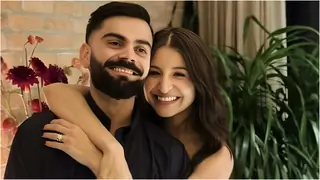No matter the medium, there are and always have been two methods of telling a story: linear and non-linear.
Nonlinear narrative' has existed throughout history but has often been considered defective or inferior to linear narrative. As far back as classical Greece, critics said that Homer's Odyssey has fewer narrative "defects" than the 'Illiad' because the protagonist is always present, and there are fewer loose ends. Even in the twentieth century readers and viewers have complained when a story is difficult to follow or when it is not resolved nicely.
And so do we about the current track.
And where CVs went wrong
In executing this for Indian Audience:
With Pulp Fiction, Quentin Tarantino allowed us to follow three stories that stopped, started, reversed and replayed themselves as easily as a VCR. With the advent of hyperfiction and hyperdrama, the timespace structures are infinite and also relative to the surfer who chooses to enter, leave, interact or even follow her own narrative. Just as Aristotelian dramaturgy reflected that culture's views of time and space, our nonlinear narrative could reflect the discoveries of quantum mechanics and cosmology, using space as a microcosm or macrocosm, time that goes back to the future or winds around itself and timespace that unites the two in Einstein's curved spacetime or Stephen Hawking's black holes. The possibilities for nonlinear narrative are endless.
To begin, what is the difference between linear and non-linear storytelling?
Linear is as simple as it gets: A to B, B to C, C to D, D to E, and so on. The story progresses from a concrete beginning, builds to a climax with various chapters (scenes) that add to the story, and eventually ends in a solid conclusion, a So What? that ties the entire story together. Examples of this range from your average fairytale to Huckleburry Finn to Great Expectations to Iron Man and so on. Although I did say this is the "simpler" form of storytelling, this does not mean, in any way, that "simpler" equates with sub-par. There are plenty of stories written in this manner that are beautiful and excellently crafted and there are plenty of stories written linearly that are complex, incorporating intricate symbolism and characters into a fabulously written plot.
So what did I mean when I said linear storytelling is as simple as it gets? Because when you compare it to non-linear, it is extremely easy to picture the complexities.
Non-Linear is the more abstract method of storytelling. Instead of following the A to B method, non-linear stories possess a greater freedom of time travel: they can begin where they want and they can end where they want. Non-Linear stories are famous for incorporating numerous flashbacks, flashbacks within flashbacks, memory sequences, and many others.
I will say that to those who do not understand the differences between linear and non-linear storytelling,it is a "mental rollercoaster." The film/show jumps between past and present, there are dreams within dreams, flashbacks within flashbacks, and the past even makes an appearance in the future!
Yet despite these complicated devices, the seasoned observer will appreciate the film/piece for its rich beauty and intricacies.
And we did.
Where the CVs went wrong?
The CVs and theme of the show was set for a non-linear narrative.But though it was a non-linear narrative,CVs ensured that we as viewers see the linear narrative' in the show.Let me explain what a linear narrative' is. Linear narratives live up to their name, meaning you could draw a straight line from the beginning to the end of a story. These narratives start the story at the beginning and tell consecutive events until the finale. In contrast, nonlinear narratives might skip around to different points in time. Most linear narratives follow a similar structure: The exposition sets the tone and theme of the story, followed by the rising action, which leads to the story's climax, followed by the falling action and the denouement, or the finale.
And with Delhi track,they chose to shift to non-linear narrative'.The problem stemmed from there.As viewers of 150+ episodes have been well attuned to linear narrative and most importantly the cause and effect' of each situation.Now with this sudden change in narrative structure has definitely hampered the viewers.On top of that the execution and not so solid story chunk is disheartening.
The Deployment of Narrators/VOs
Narrators are sometimes categorized by the way in which they present their story. An intrusive narrator, a common device in many 18th- and 19th-century works, is one who interrupts the story to provide a commentary to the reader on some aspect of the story or on a more general topic.
Both the Voice Overs/Narrators of our show are 'intrusive narrators'.They have been our 'sole' consolations over this track and at few points of this entire show.
Where CVs went wrong?
An unreliable narrator is one of the most powerful tools available to a writer. His unreliability might be obvious to the reader throughout, it might be revealed gradually, or it might come as a revelation that provides a major plot twist.
An unreliable narrator is one who does not understand the full import of a situation or one who makes incorrect conclusions and assumptions about events witnessed; this type is exemplified by the narrator of Ford'sThe Good Soldier.
Yes! The deployment of an un reliable narrator' could have been an interesting take than VOs either morally preaching or warding off with laughter.
The CVs have completely went wrong with blending narrative structures without adding required spices and not deploying an element of mystery to sustain the viewership.
Love story (dealing with infinite number of episodes) without proper narration and narrative structure is definitely a 'HIT AND MISS' with viewers.
P.S.:The writer is a student of English Literature.
P.P.S.:Sorry for this long 'academic jargon' but wanted to analyse this.😳 Would love to read all your opinions.
































